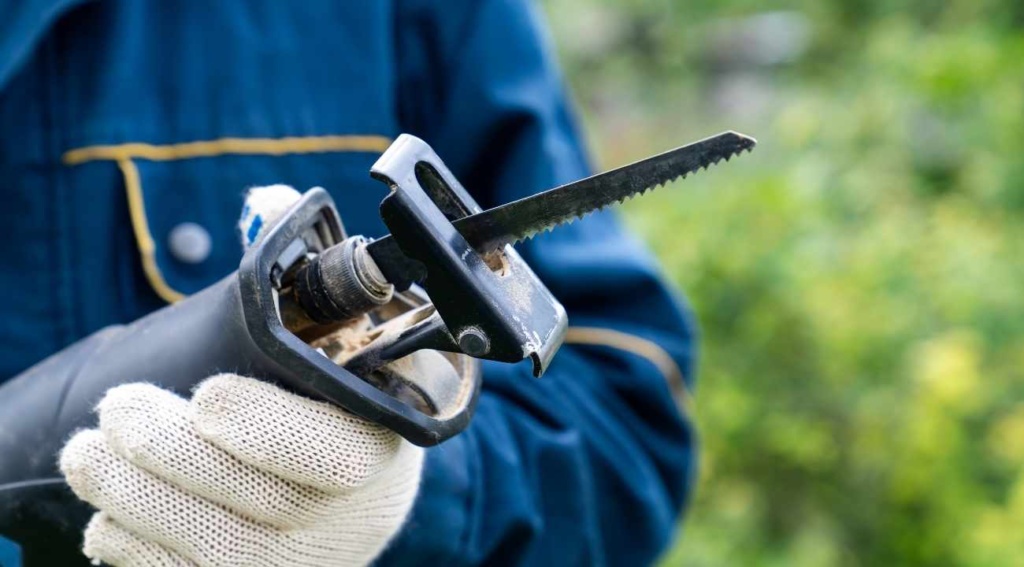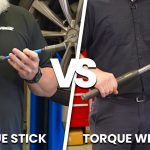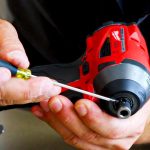Table of Contents
A Reciprocating Saw is a powerful and versatile electric saw that can cut down anything by applying a push-and-pull motion. It is a convenient tool for cutting through materials such as – drywall, wood, metal, plastic, glass, branches, plaster, etc. The reciprocating saw blade is small and can get into tighter positions than a circular saw blade. Reciprocating saw blades have different structural variations to work with different types of material. However, the blade might need to be changed several times during work. But the process is simple and takes no time at all.
Types Of Reciprocating Saw Blades
You can find many different types of reciprocating saw blades available in the market, depending on the material. No matter how robust your saw is – an effective blade is all you need to get the job done. Each type of blade differs from one other in two aspects – teeth and material.
Teeth
A blade contains cutting teeth that look like shiny sharp indents. There are various types of blades and each type of blade contains a unique teeth setup. You should sharpen these blades from time to time to maintain the cutting power of these teeth. A blade’s teeth are measured in TPI – teeth per inch. Naturally, TPI ranges from 2 to 24, and the number can go higher if needed. Remember that the higher the number is, the smoother and slower the cut will be. Also, the lower the TPI is, the faster the cut, but you will not get a smooth finish. Low TPI blades are suitable for wood, whereas high TPI blades are better for cutting metals.
Material
From the design point of view, reciprocating saw blades are generally of two types. They are either made from high-carbon steel or high-speed steel.
- High Carbon Steel (HCS) Blade: These are very cost-effective and readily available steel blades. Depending on the hardness of the surface, you can bend this steel, but the chances of breaking it are low. So, to maintain the performance of this blade, it is used on soft materials, such as – plastic and softwood. However, if you use it on tough material, the chances of these blades being ruined are high.
- High-Speed Steel (HSS) Blade: High-speed steels are made of carbon, tungsten, molybdenum, chromium, and vanadium. It generates a lot of heat while cutting. These blades are strong, durable, and cut faster than high-carbon blades. However, this blade is not easy to bend due to its strength. These blades are great on non-ferrous metals, hardwood, and plastic.
- Bi-Metal Blade: There is also another type of blade called the “Bi-metal blade.” It is made of a combination of high-speed steel and high-carbon steel. It is a hybrid blade, so it’s more durable and flexible than HCS or HSS blades. This blade lasts a long time and does not break easily, so it’s a bit more expensive than the other two blades. This type of blade is at the top of most people’s list of choices as a reciprocating saw blade.
Bi-metal blades can be further divided into several categories. These are –
- Carbide-Tipped Blade: This bi-metal blade is a mixture of tungsten/titanium and carbon. The teeth of this blade are only carbide-tipped. It’s an impact and heat-resistant blade that can cut through heavy metal sheets or dense wood.
- Carbide Grit Blade: It’s a tungsten carbide blade with no teeth. Instead of teeth, it has a plain traditional blade with an abrasive strip. These blades are really hard and durable, so they can easily cut through without damaging the surface.
- Diamond-Tipped Blade: Diamond-tipped blades have a coarse surface around the tip. But unlike carbide grit blades, this gives a smooth and clean cut through any dense material. As the blades are diamond-tipped, so it’s an expensive item. However, this blade is so strong that you can cut concrete and stones effortlessly with this blade. In addition, because of its material and sharpness, you can use it for longer than other blades.
Attaching The Blade
There are two ways to attach the blade to a reciprocating saw. These methods depend on the mechanism of the saw itself. We will guide you through these blade attachment styles.

Using A Screwdriver Or Allen Key
Before we jump into the attachment steps, there are a few things you need –
- Allen key set
- Screwdriver
Whether you use a screwdriver or an Allen key – depends on the screw socket. For example, if you see a regular socket, use a screwdriver. And if you see a hex-head screw socket, then you will need to use the Allen key.
Then, to loosen the screw, rotate the screwdriver or Allen key counterclockwise, and the screw will slowly come out with each spin. After you remove the screw, jiggling it back and forth will help you to pull the blade away from the socket. There is a hole at the end of the blade that helps the saw to hold the blade. So, a little jiggling frees the blade from the saw clamp.
Now take the new blade and slide it into the clamp area. Again jiggle the blade a little to check if it is perfectly set or not. Then, use the screwdriver or Allen key and rotate the screw clockwise to tighten it.
Using Quick Release
Find the quick-release lever first. If you cannot find what you are looking for, just follow the instruction manual. It can be found where you insert the blade.
Hold the quick-release lever until the blade is inserted. It has a spring system, so you have to hold on to it. Otherwise, it will shut down again. Next, insert the blade into the specified position and release the lever. Tightening the lever will help hold the blade.
Reciprocating saws with quick-release levers are quite popular nowadays. Using this takes only a few seconds to change the blade, which saves you a lot of time. So it is wise to use a reciprocating saw with a quick-release lever.
Safety Precautions
Putting a blade on a reciprocating saw is not a difficult task. However, you should always maintain safety as accidents can happen at any time. Since we are working with sharp saw blades, you should wear gloves on your hands. Also, the reciprocating saw should be unplugged before changing the blade each time. When working on glass, wood, or metal surfaces with a reciprocating saw, you should wear safety goggles to prevent small pieces of debris from getting into the eyes. Above all, no matter how easy the task is, you should never attempt it without taking proper safety measures.
The main goal of today’s post was to inform you about the correct way to attach the blade to the reciprocating saw. If this is not done correctly and the blade slips, there is a possibility of an accident. Reciprocating saws are very handy, and attaching blades to the saw is easy. However, we have found the quick-release lever method to be more convenient because it saves time. Above all, you should maintain proper safety before attempting such work.










Leave a Comment